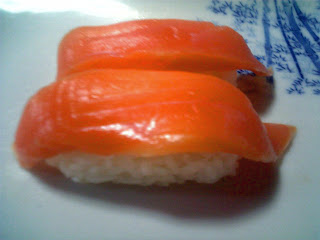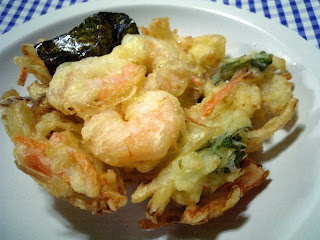
Tokoroten is a jelly-like long and narrow shaped cold snack.
It is made from Tengusa ( a type of seaweed ) and water.
Tokoroten is not so soft as jelly.
It has pleasant unique texture.
In eastern part of Japan, It is coverd with vinegar-based sauce. ( photo above is Tokoroten covered with vinegar-based sauce )
In western part of Japan, It is covered with sweet syrop.
Tokoroten is low in calorie, and rich in fiber. It is good for diet.


















